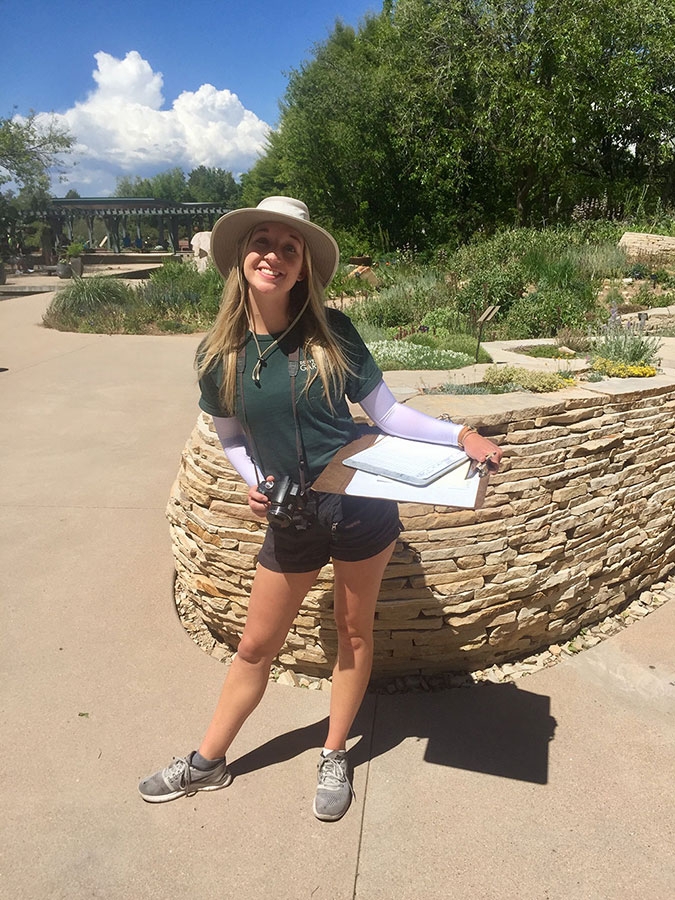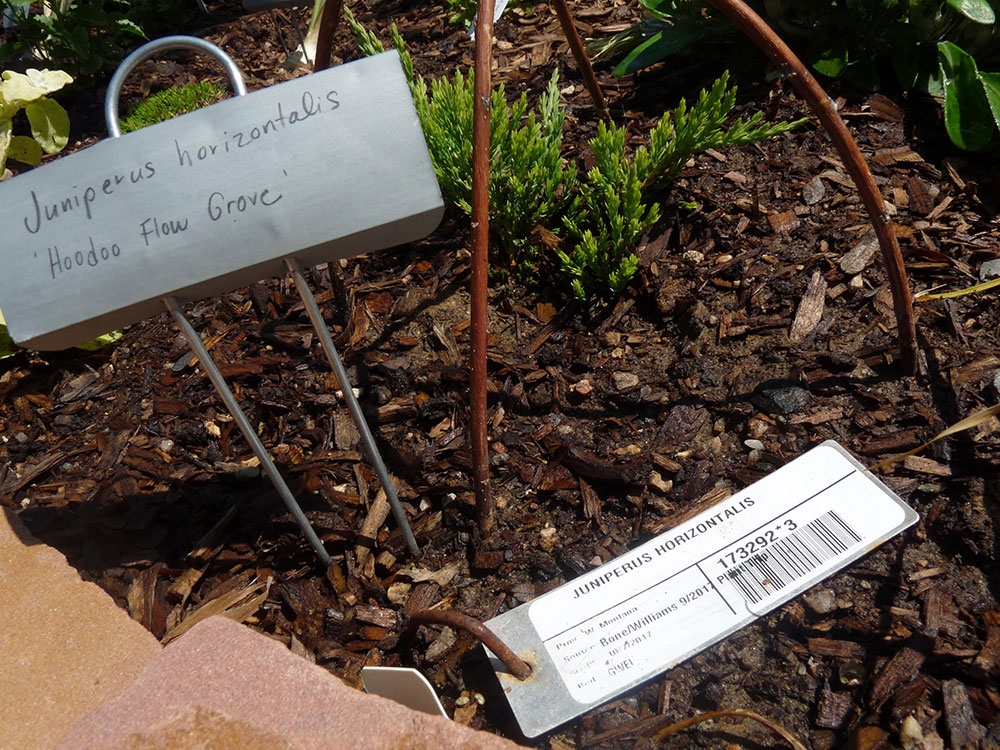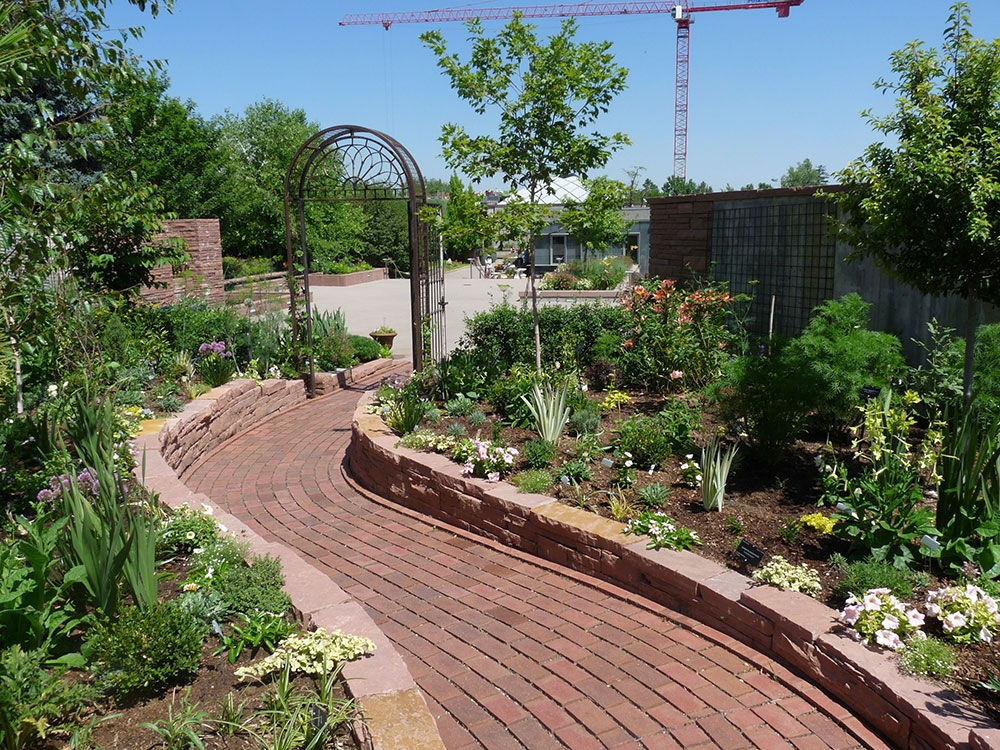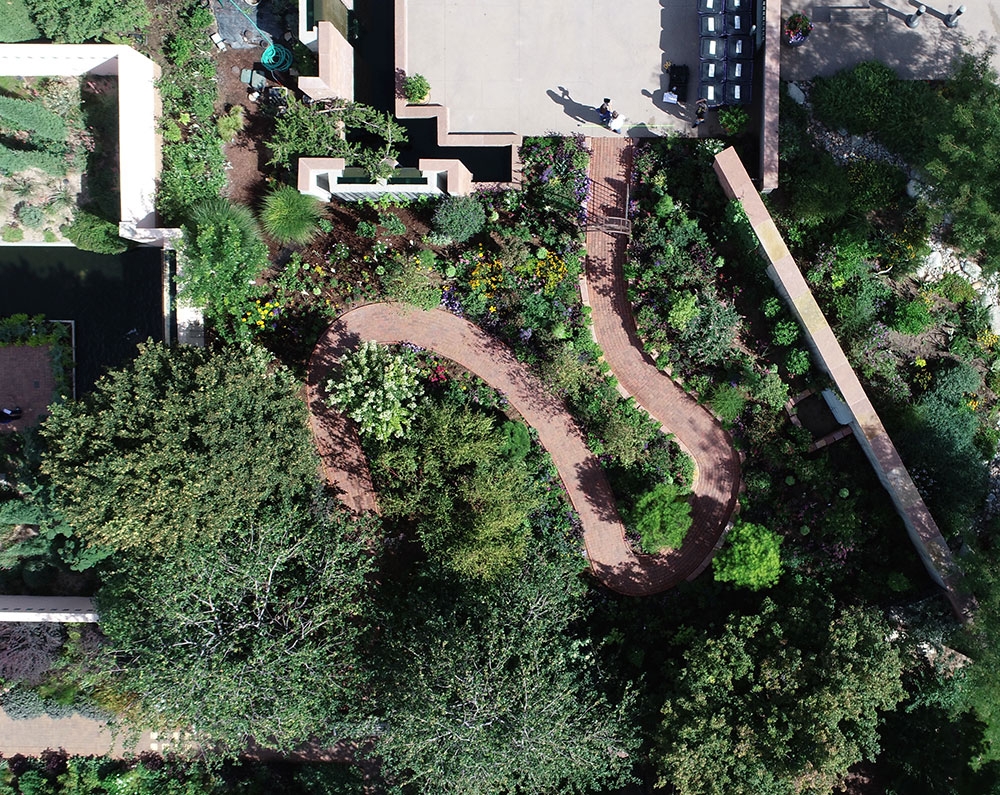The Life of a Plant Mapper
To my friends in college I was always the crazy plant lady with a baby palm tree in her apartment, but I’ve found that here at Denver Botanic Gardens I’m the least “planty” of the plant people. I just finished my degree in Environmental Science & Policy at Chapman University in Southern California, with a special interest in urban planning, GIS and sustainable design. Searching for a way to combine my love of plants with my interest in spatial design, and also yearning to return to the Rocky Mountains (as the Utah native that I am), I was more than thrilled when I found out there was an internship at the Gardens in Plant Records and Mapping.
The Plant Records Department exists to maintain and nurture records of the massive living collection that is Denver Botanic Gardens. As a museum of living plants, we have tens of thousands of plants that each have their own accession number and corresponding record in our database, with information such as where they came from, where they’re planted, how long they’ve been there and what condition they’re in. Ideally, each of these plants also has a place on a comprehensive map of the Gardens—which is where I come in.
A normal day in the life of Jenny this summer started with coming in to work and checking my calendar to see what mapping appointments were scheduled. A mapping appointment meant I was out in a particular garden bed either with my awesome mentor Holly Parrott (plant mapping specialist) or with the horticulturist who maintains that garden, inventorying what plants exist in that bed and using a list of unmapped plants to pinpoint the locations of new ones. I’d print out whatever maps and lists I needed, load them up on a giant clipboard, slather on some sunscreen, grab my hat and my fanny pack full of erasable colored pencils, and head out for a few hours to draw maps and take inventory.
Then I’d head back inside, hop on BG-BASE, BG-Map and AutoCAD, and process everything I’d recorded. This was ideally a quick process, looking up plants by their accession number and updating their record and location. More often than not, it involved some serious mystery solving when accession records for individual plants were unknown. In these cases, I would identify the accession by using any information I could find concerning the source and age of the plant and any possible prior locations to pinpoint it in our database, ensuring that every plant is accounted for.
I got the opportunity to map a large variety of garden beds, but my main project was mapping the new Secret Passage garden bed in the Welcome Garden, just south of the Visitor Center. This garden bed was newly installed in 2018, and though it’s a vibrant and beautiful garden in person, in our mapping database it apparently contained only seven plants. After four weeks of regular mapping appointments, lost accession tags, hesitant plant ID-ing, several messy maps covered in colored lines and numbers, and A LOT of mystery solving in our database, the Secret Passage went from having seven plants mapped to having over 150! Contrasting this project with other efforts of mystery solving in older and more mature garden beds, the importance of starting out with accurate and thorough records was really driven home.
Though perhaps still the least “planty” of the plant people, I was embraced as an important part of the Gardens this summer and will never forget all the things I learned and the people (and plants) I got to interact with. Who knew record keeping could be so fun?
This blog post was written by Jenny Gritton. Jenny is originally from Utah, and graduated in 2019 from Chapman University in Southern California with a bachelor’s degree in Environmental Science & Policy. She loves cats, has a baby palm tree, is a certified Zumba instructor and is pursuing a career in urban planning and sustainable design.
Plant Records Horticulture Intern Gallery





Add new comment